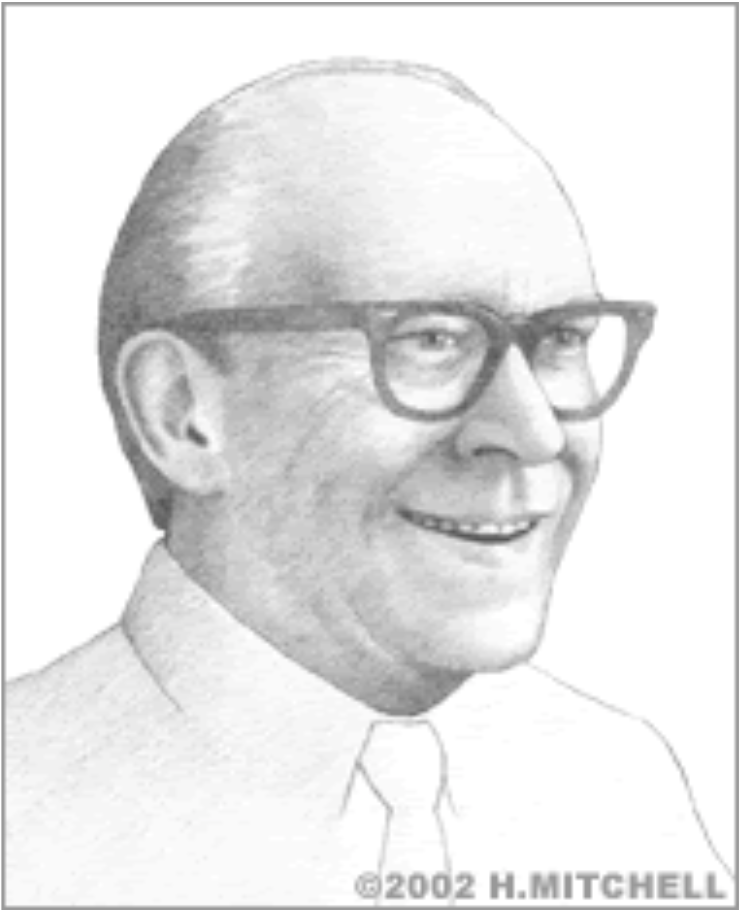Willard Libby
Before the 1940s, scientists had no accurate way of determining the age of fossils or other ancient objects. They had to rely on relative dating techniques, which typically had great potential for error. A breakthrough came when Willard Frank Libby invented a method known as radiocarbon dating, a process that revolutionized the way we look at artifacts and document world history.
Libby was born in Grand Valley, Colorado, on December 17, 1908. He enrolled at the University of California at Berkeley in 1927, where he received his bachelor’s and doctorate degrees in 1931 and 1933, respectively. In 1933, he accepted an appointment at Berkeley as an instructor in the chemistry department. Over the next eight years, Libby was promoted to assistant and then associate professor of chemistry. A physical chemist, Libby developed specialties in radiochemistry, particularly hot atom chemistry and tracer techniques. In 1940, Libby married Leonor Hickey, and they had twin daughters.
In 1941 Libby was awarded a Guggenheim Memorial Foundation Fellowship and elected to work at Princeton University. In December of that year, however, the Fellowship was interrupted as the U.S. entered World War II. Libby went to Columbia University to work on the Manhattan District Project, a program created to develop the atomic bomb.
In 1945, after the war had ended, Libby became a professor at the Institute for Nuclear Studies (now the Enrico Fermi Institute for Nuclear Studies) of Chicago University. There, in 1947, Libby first proposed his radiocarbon dating theories. Soon after, he presented evidence of its viability. Radiocarbon dating, also known as Carbon-14 (or C-14) dating, is based on the principle that all living things are mostly made of carbon. The method of dating lies in trying to determine how much carbon 14 (the unstable, radioactive isotope of carbon) is present in the artifact and comparing it to levels currently present in the atmosphere.
Once an organism dies, the C-14 in the organism begins to disintegrate at a steady, known rate. Thus, scientists can measure the amount of C-14 remaining and use a scientific formula to determine the age of the sample. C-14 dating does have limitations, but it has been very useful in determining the age of some of the world’s most important archaeological finds, including the Dead Sea Scrolls. Libby showed that the last North American ice age ended about 10,000 years ago, not 25,000 years ago as previously believed by geologists. The University of Chicago Press published Libby's book, Radiocarbon Dating, in 1952. Carbon dating has since become the most important dating method available, and is applied in many different scientific fields. These include archeology, geology, oceanography, hydrology, atmospheric science, and paleoclimatology. Libby received a handful of U.S. patents for his work in radiocarbon dating and radiation breakthroughs in general.
In 1954, Libby was appointed by President Eisenhower as a member of the U.S. Atomic Energy Commission. This appointment was renewed for a further five-year term in 1956, but Libby resigned from it in 1959 to become a professor of chemistry at the University of California at Los Angeles (UCLA). In 1962 UCLA appointed him director of the Institute of Geophysics and Planetary Physics. In the same year he became the founding director of UCLA's Space Physics Center. Later he became director of the Douglas Aircraft Company (now part of the Boeing Corp.), and a member of the National Science Foundation's General Commission on Science.
Willard Libby was honored with a Nobel Prize in Chemistry in 1960 for his radiocarbon dating method. During the course of his career, he also received a number of other awards including the American Chemical Society Award for Nuclear Applications in Chemistry in 1956, the Elliott Cresson Medal of the Franklin Institute in 1957, the American Chemical Society's Willard Gibbs Medal Award in 1958, the Albert Einstein Medal Award in 1959, and the Day Medal of the Geological Society of America in 1961. Libby died on September 8, 1980 in Los Angeles, California.


